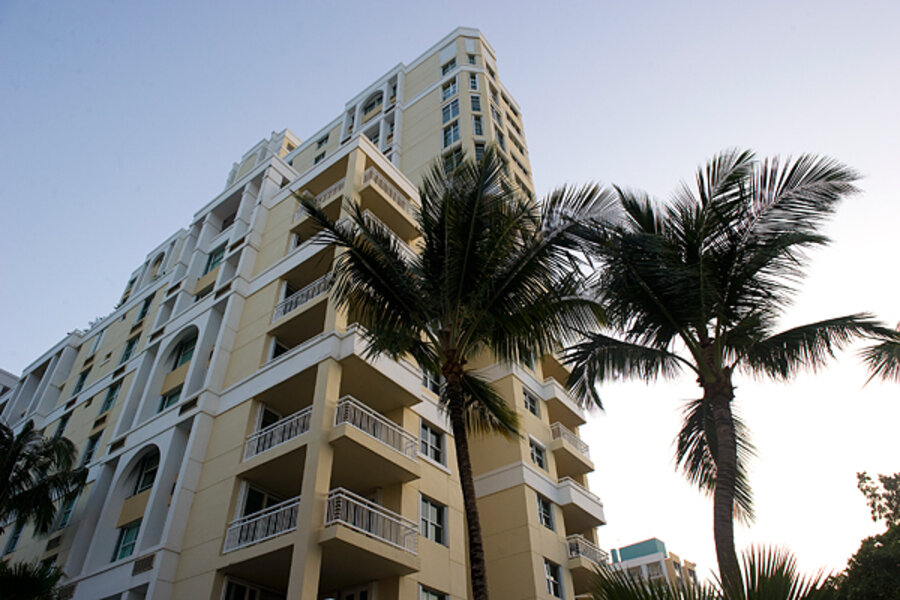Has Puerto Rico found a solution to the US housing crisis?
Loading...
| San Juan, Puerto Rico
After the US housing market crashed in 2007 and 2008, Puerto Rico is one of many places that ended up with a glut of houses, condos, and luxury villas on the market.
With the mainland in recession, this was not exactly a surprise. Investors saw their portfolios shrink. Americans who had been using the rising equity on their primary homes to finance the purchase of vacation homes – in tropical spots such as the territory of Puerto Rico – suddenly were “underwater” on their mortgages. Banks pulled back from lending on vacation homes.
The damage to the US housing market is not over. According to an analysis by the Congressional Budget Office, 2.1 million homes are for sale in America, a number the CBO says “far exceeds” normal conditions.
In Puerto Rico, according to an analysis in 2009 by Estudios Tecnicos Inc., the glut of luxury houses worth $600,000 or more was so big that the overhang would not be absorbed for three years. For homes priced between $260,000 and $420,000, there was a five-year supply.
Enter Gov. Luis Fortuño in 2010 with a plan backed by the legislature. Its incentives for potential home buyers included:
- Anyone buying a new home does not have to pay capital-gains taxes when the house is sold.
- Transfer fees are reduced for existing housing and eliminated for new housing, benefiting both buyers and sellers. The incentives expire at the end of this year.
- For the first five years, a new homeowner pays no property taxes. And, if the property is going to be rented, the rental income is tax free for 10 years.
- The government offers qualified buyers a loan that could be used for a down payment or to pay closing costs.
“All of a sudden, from the glut we had, there are people coming from New York to buy our condos and beach houses,” says Governor Fortuño, a member of the New Progress Party as well as the Republican National Committee, in a recent interview. “Local people also started to buy homes, as well.”
Within two years, Fortuño says, the inventory of unsold homes dropped by 50 percent, and home prices started to stabilize. According to Estudios Tecnicos, the number of unsold homes fell from 20,000 in 2010 to 8,000 as of this April.
“It has been so powerful, I decided to amend our code, and there will be no capital gains taxes, period,” he says, referring to home sales.
Would this work in the United States?
Some housing economists and real estate brokers say there might be something to it.
“If you offer the right incentives, then we can do a lot to get rid of the excess inventory out there,” says Patrick Newport, US economist for IHS Global Insight in Lexington, Mass.
Puerto Rico’s provision of tax-free rental income could be particularly alluring, says Mr. Newport. “There is some evidence that home prices are starting to stabilize, and one of the key reasons is that investors are stepping in to buy homes,” he says.
Barbara Van Poole, a real estate broker in Dallas, particularly likes Puerto Rico’s $25,000 loan that can be used by buyers to pay closing costs or as a down payment.
“It could put some people in the market who are maybe holding off,” says Ms. Van Poole of Van Poole Properties.
In fact, Van Poole would like to see some kind of tax credit similar to the recent US government effort that gave first-time home buyers a tax credit of $8,000. “We saw a huge benefit in the real estate market,” says Van Poole. “We would love to see that for anybody.”
However, some things probably wouldn’t work in the US – particularly the five-year moratorium on property taxes, she says.
“In a lot of cities, that is their main source of income,” she says. “In Texas, it is almost the only source of income, so you would be shutting down the local governments unless you were subsidizing that.”







